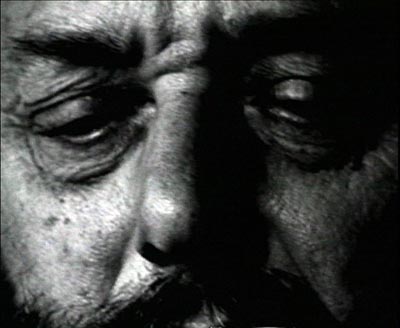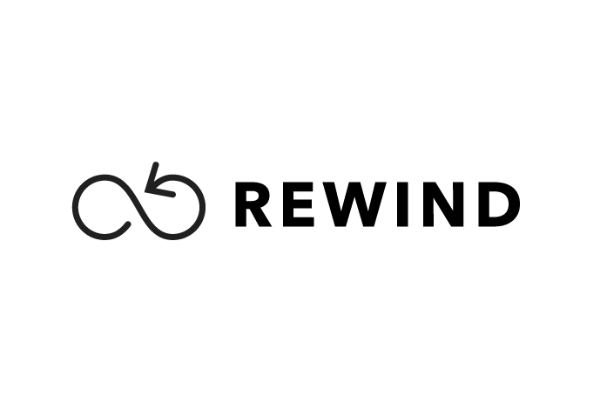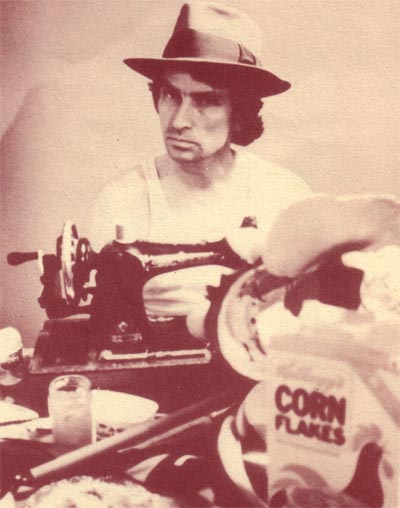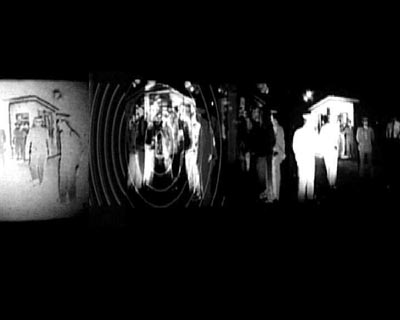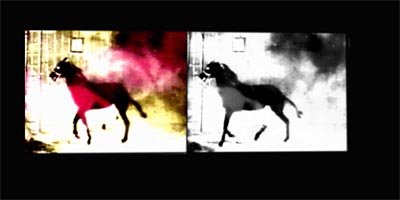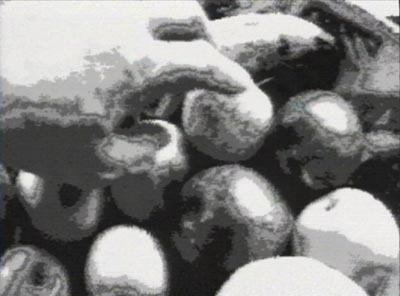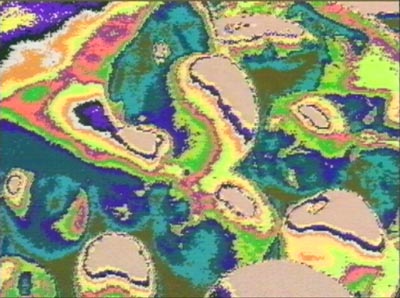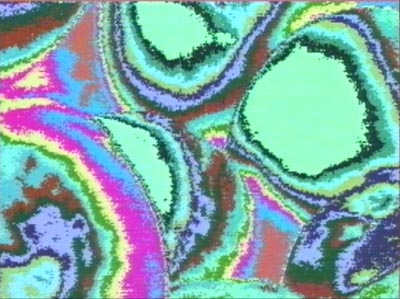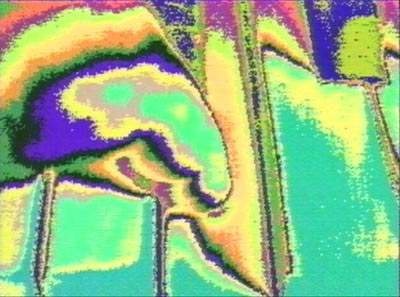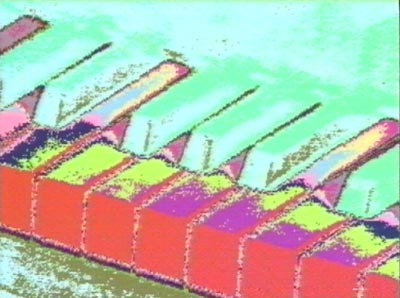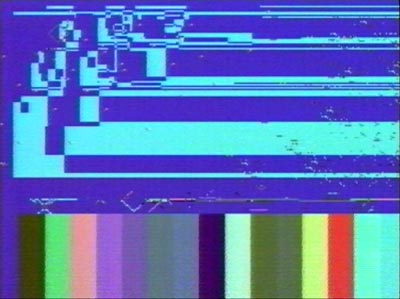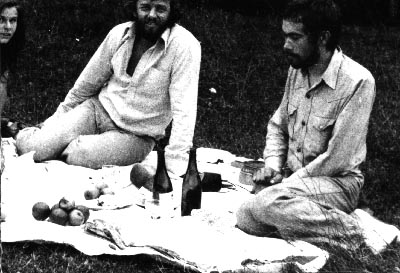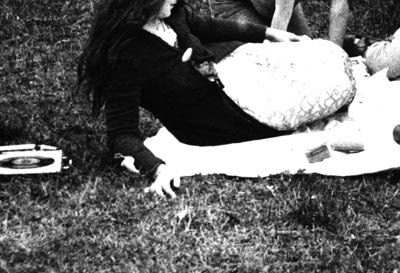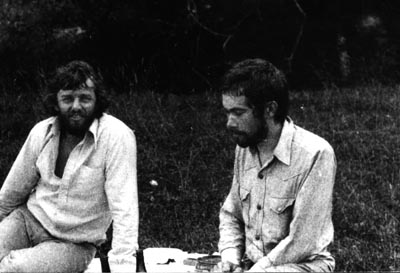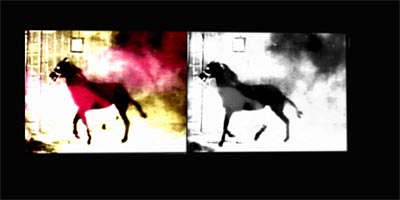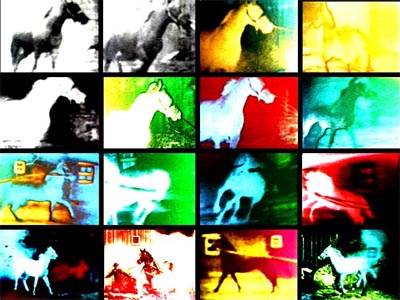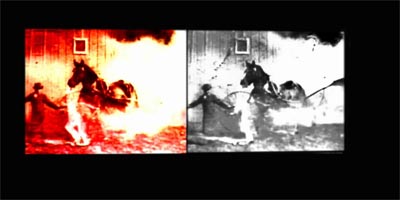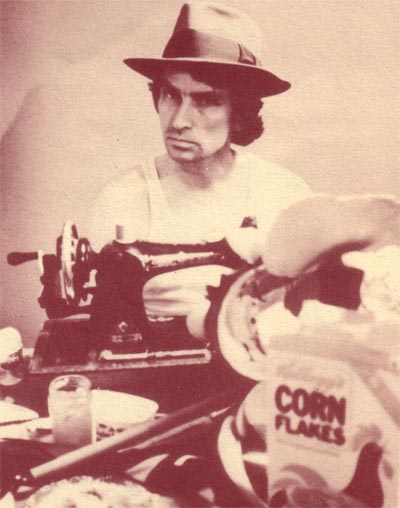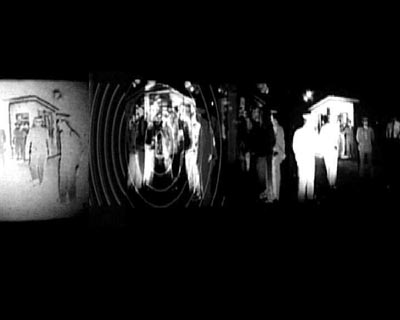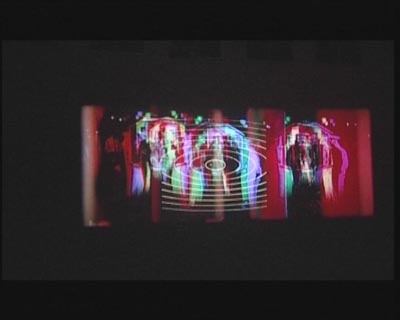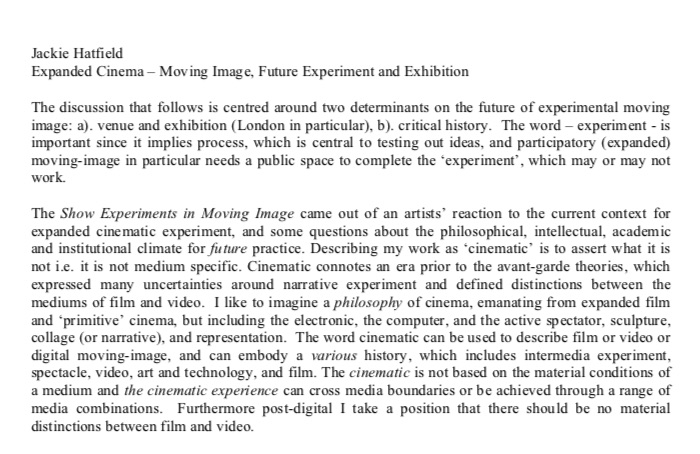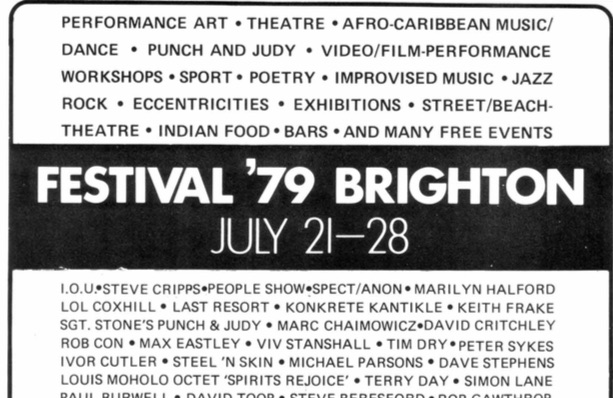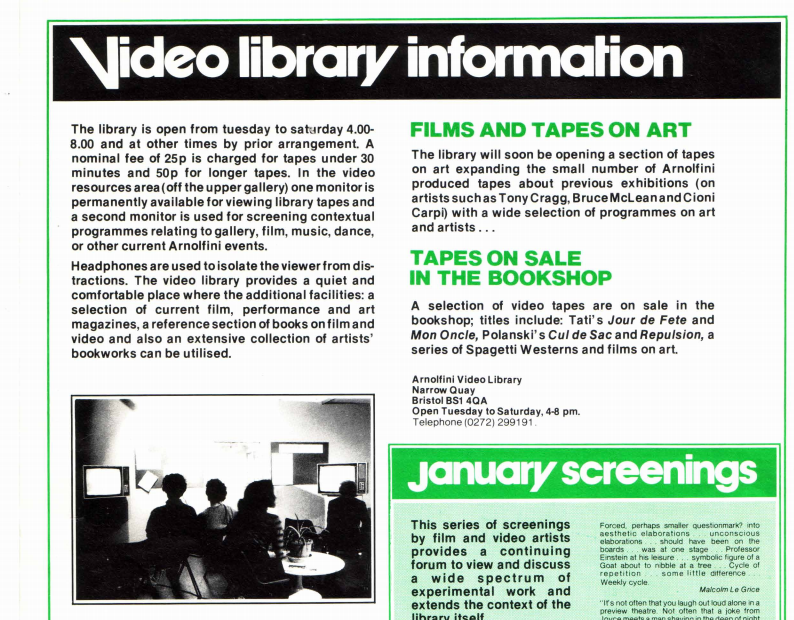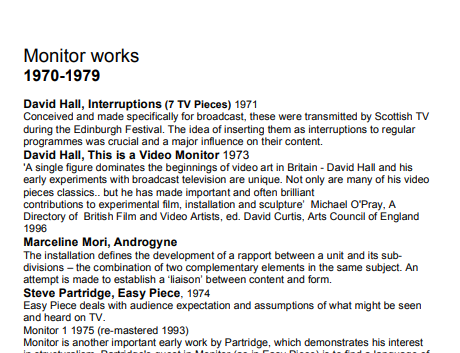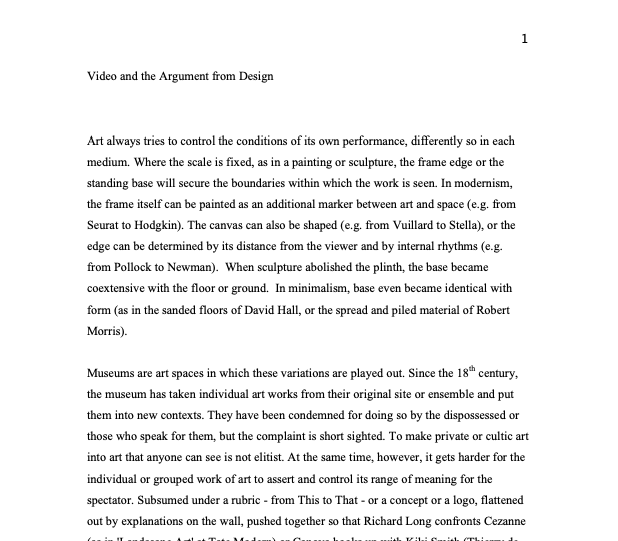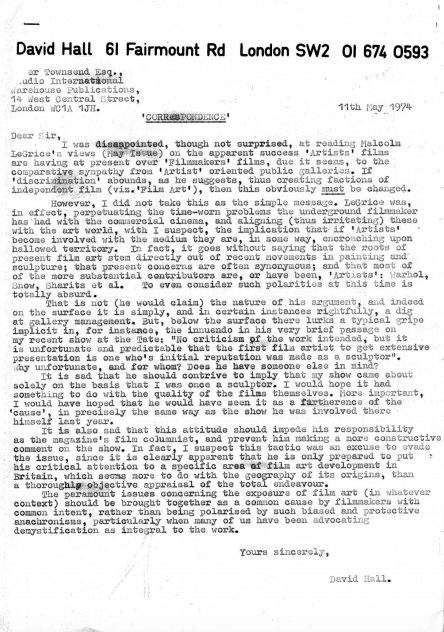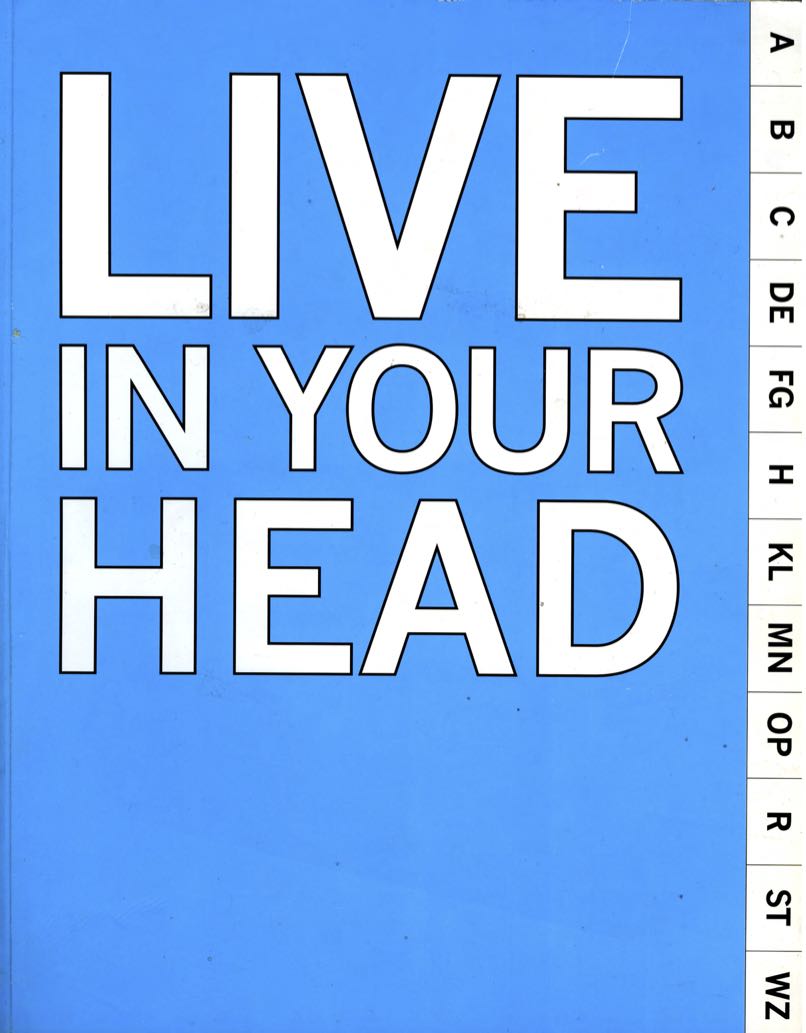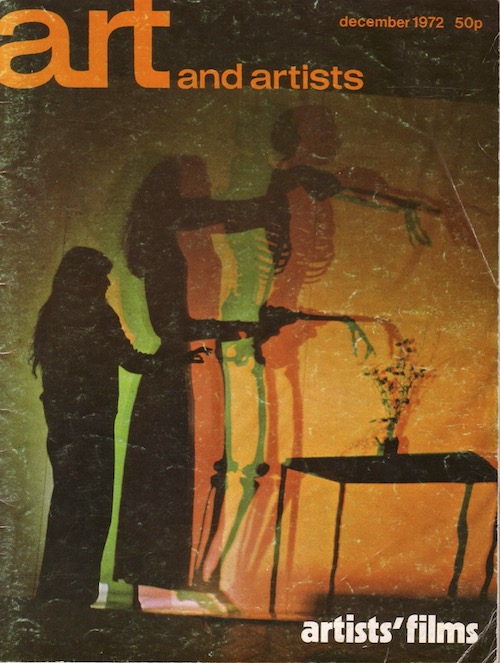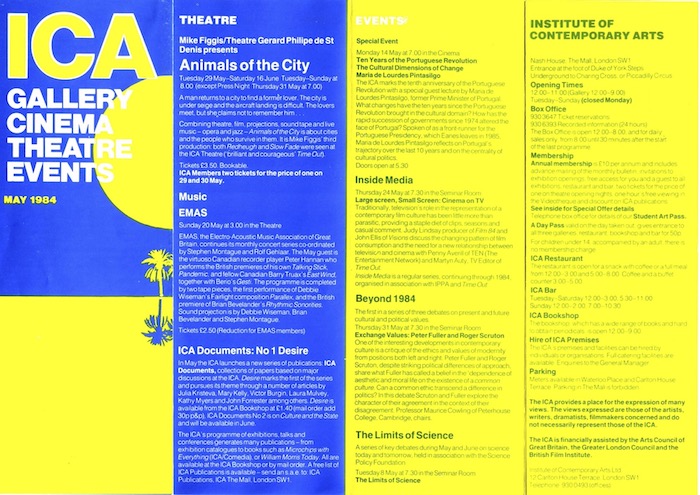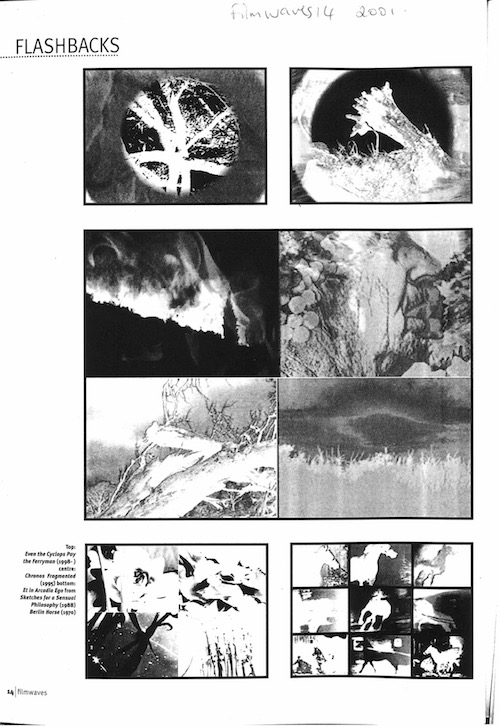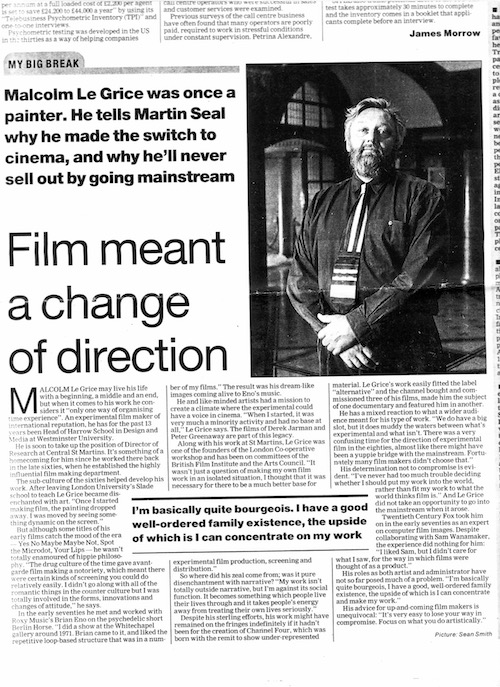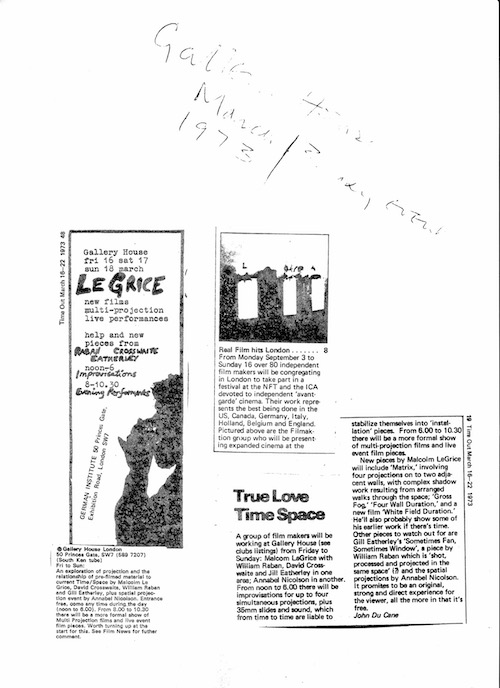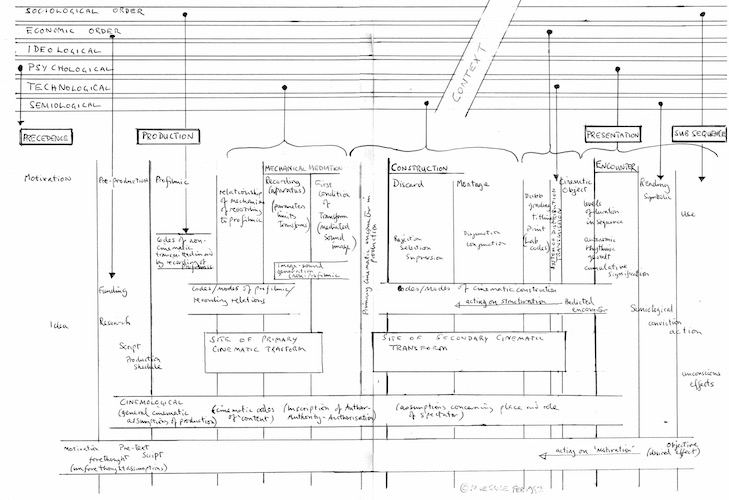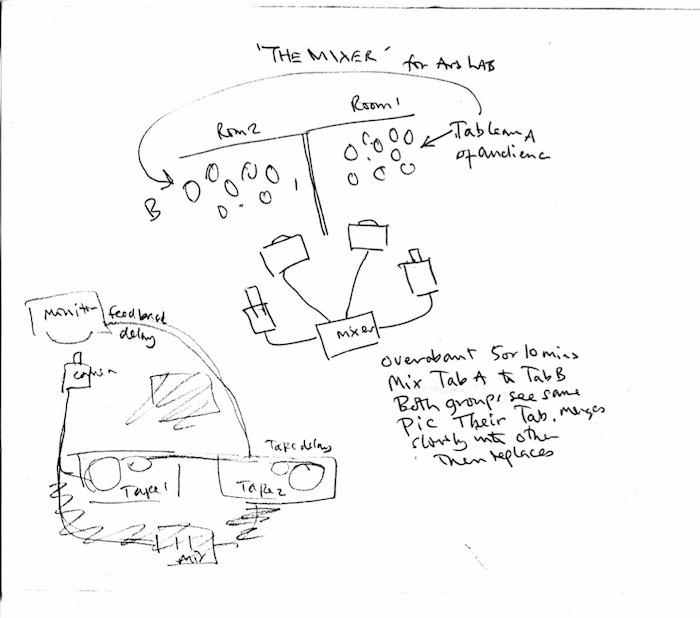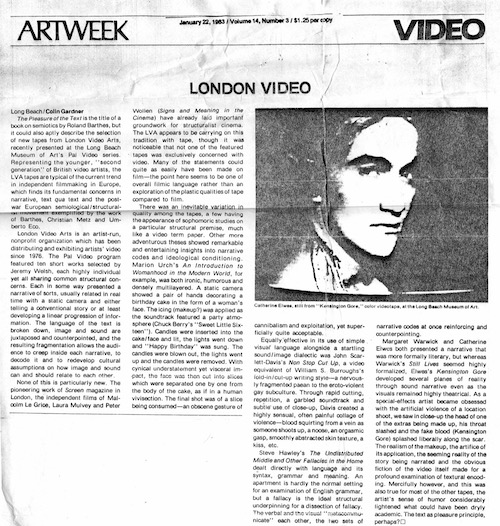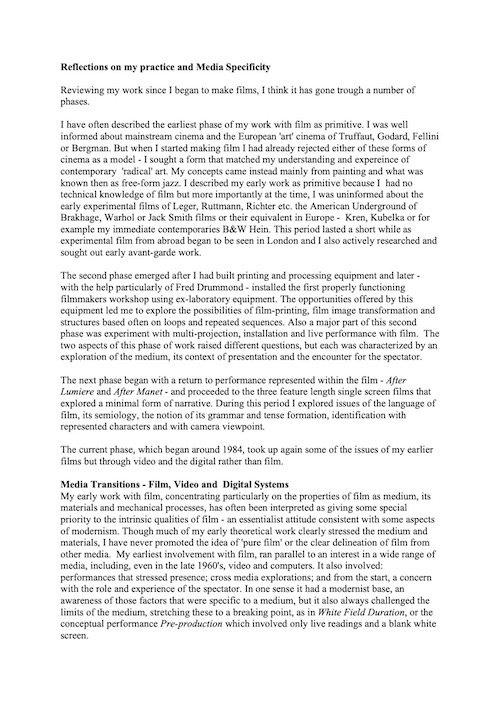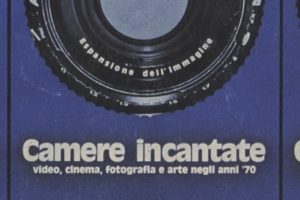LeGrice, Malcolm
“Le Grice’s work has spanned across media from film/video/digital, to computer, in various contexts and forms, with the concomitant material and linguistic complexities analysed in his published writing across decades. Since being at the technological centre of filmic exploration at the London Filmmakers Coop, Le Grice has continued with a similar line of experiment with video and digital cinema, that is, the exploration of colour, texture and sound, the unpicking of systems and structure, combining images as visual music.” – J.Hatfield
Born in Plymouth in 1940, Malcolm LeGrice is probably the most influential modernist filmmaker in British cinema. LeGrice’s work has explored the complex relationships between the filmmaking, projecting and viewing processes which constitute cinema as a medium, and shows an intense interest in the processes enabled by optical printers and by the combination of different types and gauges of film stock.
He started out as a painter in London in the early 1960s and turned to filmmaking in the middle of the decade with the Super-8 film ‘China Tea’ (1965), which he followed with ‘Castle 1’ and ‘Little Dog For Roger’ (both 1966), made mostly from re-worked found footage. ‘Castle 1’ can be seen as prophetic: for screenings of the film in 1968, LeGrice hung a light bulb next to the screen, flashing on and off at regular intervals and, when on, obliterating the screen image, a practice used in Martin Creed’s Turner-prize winning installation some 35 years later.
In the ’60s his work was informed by the radical politics of the period in opposition to the Vietnam War and US cultural imperialism, and extended to a deep hostility towards the ‘illusionism’ of Hollywood and other commercial cinemas. This tendency was particularly manifest in ‘Spot the Microdot’ or ‘How to Screw the CIA’ (1969), which includes found footage of GIs in battle. But LeGrice’s approach to cinema was also animated by a modernist impulse to put the central focus on the properties of the medium itself, turning them into the ‘content’ of the work. For instance, in ‘White Field Duration’ (1972-73), a white screen marked only by a scratch running across clear celluloid, activates an intense perception of projection time. This film was also performed as a two-screen event and LeGrice’s installations at times extended to four or even six screens. From the late-sixties onwards, his multiple screen work was often accompanied by live performances interacting with the projection event (‘Horror Film 1’ (1971) and ‘Horror Film 2’, (1972)).
LeGrice’s best and most complex work was done in the ’70s when, in the face of an intense hostility towards narrative cinema manifested by some of his avant-garde colleagues, he made a trilogy – ‘Blackbird Descending’ (1977), ‘Emily’ (1978), and ‘Finnegans Chin’ (1981) – which elaborated a critical kind of storytelling in which both the formal aspects of cinema and the very structures of narrative are explored in relation to each other: The films are set in the film-maker’s own domestic environment and achieve a combination of intellectual and aesthetic intensity rarely seen in any kind of British cinema. LeGrice also engaged with art history (‘After Manet’ (1975), ‘After Leonardo’ (1973)) and with the pioneers of cinema (‘After Lumiere’ (1974) and ‘Berlin Horse’ (1970) – in which he included a re-filmed Hepworth film of 1900, ‘The Burning Barn’).
In addition to being a prolific filmmaker, LeGrice played an influential role in the critical and institutional promotion of avant-garde cinema in Britain. He was a prominent activist in the Drury Lane Arts Lab, where he formed Filmaktion with William Raban, Annabel Nicolson, Gill Eatherley, Mike Dunford and David Crosswaite, and organised mixed-media shows. He was also a pioneer in the educational domain, initiating the trend towards establishing filmmaking sections in art colleges, a policy that bore fruit in the 1980s as new generations of filmmakers emerged from these courses. He is also an inveterate polemicist: his book, Abstract Film and Beyond, provides both a historical and a philosophical context for the British and European avant-garde cinemas, and he has contributed regularly to the journal Studio International.
LeGrice carried out the first experiments with computer-based film making in Britain (‘Your Lips 1’ (1970)), and though it was a preoccupation that he laid aside after 1971, it came to dominate his media practice (along with research into digital art) from the 1980s onwards. Since 1997 he has headed the media research programme at Central St Martin’s art college in London, accompanying his activities with critical-historical reflections.
-
Interview of Malcolm LeGrice
View the interview transcript here
-
Exhibitions:
Exhibitions
* 1973 Paris Biennale No.8
* 1973 Gallery House, London
* 1973 Filmaktion, Walker Art Gallery, Liverpool
* 1974 Projekt ’74 , Cologne.
* 1976 Arte Inglese Oggi, Milan.
* 1976 Une Histoire du Cinema, Centre Georges Pompidou, Paris.
* 1977 Documenta 6, Kassel.
* 1977 Film als Film, Cologne, Berlin and Essen.
* 1979 Film as Film , Hayward Gallery, London.
* 1983 13th Music Biennale, Zagreb.
* 1995 La couleur au cinema, Louvre, Paris.
* 1995 The Director’s Eye, Oxford Museum of Modern Art ( touring + 1996)
* 1997 Mar Arte en la era electronica, Barcelona.
* 1997 Nov Ciber@RT III Muestra Internacional de Nuevas Technologias, Valencia.
* 2000 Mar-April Live in Your Head, Whitechapel Art Gallery.
* 2002 May Shoot Shoot Shoot, Tate Modern, touring 2002-2004.
* 2003 Century of British Artists Film and Video –Film Festivals
Films selected for screening at the following film and media festivals:* 1968 Bremen
* 1969 Tokyo
* 1969 & 70 Cannes (Quinzaine des Realisateurs)
* 1970 Luzerne
* 1972 Hamburg
* 1973 Festival of Independent Avant-Garde Film, London
* 1969, 73, 76, 77 Edinburgh
* 1974 Oberhausen
* 1976 & 77 Berlin
* 1977 London
* 1978 Montreal
* 1983 Hyeres
* 1987 Osnabruck
* 1987 Moscow
* 1995 Zagreb Media Scape
* 1995 Digital Dreams (Newcastle)
* 1996 Pandaemonium (ICA London)
* 1997 Oberhausen
* 2004 Expanded Cinema Festival, DortmundWork presented in the context of a one-person review or retrospective as follows:
* 1973 Danish Film Museum
* 1976 Stelijk, Amsterdam.
* 1976 Palais des Baux Arts, Brussels.
* 1977 Carnegie Institute, Pitsburgh.
* 1977 Museum of Modern Art, New York.
* 1977 Pacific Film Archive, Berkeley.
* 1979 International Arts Symposium, Lublin, Poland.
* 1983 Multi Media Centre, Zagreb.
* 1984 Institute of Contemporary Arts, London.
* 1997 Nov Filmoteca de la Generalitat Valencia – Retrospectiva Malcolm Le Grice
* 1998 Oct Deutsches Film Museum, Frankfurt
* 1999 Jan Art Gallery of Ontario, Cinematheque, Toronto.
* 2002 March Lethaby Gallery, London.Broadcast Screenings
* “Berlin Horse” (Dir.) within OU series first transmitted 1979. Transmitted Channel Four TV, 5 April 1993
* “Horror Film” (Dir.) included in ZDF programme of Artists’ Films transmitted, Germany ZDF March 1982
* “Finnegans Chin” (Dir.) 80 minute feature transmitted Channel Four, April 1983
* “Normal Vision” 30 minute documentary on own work (jointly scripted with Philip Drummond, directed by Margaret Williams), transmitted Channel Four, April 1983
* “Little Dog For Roger” (Dir.) included in “Das Magische Auge” transmitted on Austrian TV, February 1985
* “Sketches for a Sensual Philosophy” (Dir.) Transmitted Channel Four 9 July 1990 and September 1991
* “Abstract Film” Directed by Keith Griffiths containing interviews and film-video excerpts, transmitted Channel Four 5 July 1993 and Canadian Broadcasting Corporation December 1996
* “Chronos Fragmented” (Dir) Transmitted Channel Four 17 July 1997 -
Videography:
1985
Heads I Win – Tails You Lose1988
Juniper and The Myths Of Origin
Rock Wave
Sketches for a Sensual Philosophy: Digital Still Life
Digital Still Life
Et In Arcadia Ego
Like A Fox
Veritas1989
Arbitrary Logic1990
Rape1993
Race
Prelude
Wier1994
Balcony. Water Colour
Balcony Water Colour
Cidre Bouche
Seeing The Future
Warsaw Windows1995
For The Benefit Of Mr. K
Chronos Fragmented
Joseph’s New Coat
Out of the Crypt1998
Even a Cyclops Pays the Ferryman
Joseph’s Newer Coat2000
Still Life and Letter from Toronto2001
Jazzy Jazzy Jazzy
(untitled)2002
Neither Here Nor There
Unforgettable – that’s what you are2003
Cyclops Cycle2004
Le Grice programme 1, Avanto 2004
Digital AberrationBroadcast televisual works for Channel 4
1983
Finnegans Chin1990/91
Sketches for a Sensual Philosophy1993
Berlin Horse1997
Chronos Fragmented (Channel 4) -
Artist works:
-
Artist assets:
-
Quotes:
"Malcolm Le Grice used his column in Studio International to urge a more proactive approach. Congratulating its education department on a recent season of 'structural film' organised by Mick Hartney, he suggested that the Tate should follow MOMA's example and 'build up a collection of film work, giving it the same status as painting and sculpture', and he outlined a vision of an exhibition policy for film.
There are three very important areas for which the Tate could be the ideal context: (1) an historical repertory of avant-garde film, regularly presented as an aspect of the Tate's permanent art exhibition; (2) a regular series of showings by individual film-makers, introduced by them, beginning with a complete review of home-grown production; (3) occasional special presentations of installation and cinema in the round, work prepared for the gallery situation."
'Vision' Studio International, vol. 186 no.959, October 1973. David Curtis, A History of Artists' Film and Video in Britain. British Film Institute, 2007.



